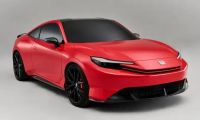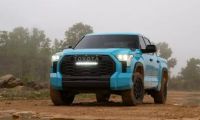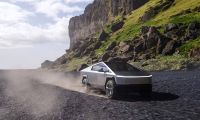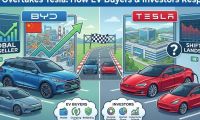Nissan Leaf sales in the U.S. slowed beginning in February 2012. According to a report published on Monday by Automotive News, Nissan's management admits the slowing sales was due to their own arrogance in doing a full 50-state rollout so fast. Given that Nissan is about to open the Leaf factory at Smyrna TN with a 150,000 Leaf/year peak production capacity, and sales are nowhere near that much, it should make one wonder whether Nissan is about to take a drubbing. But the story of the Leaf sales fall-off isn't as simple as was written by Automotive News.
The bare facts are that Nissan had projected sales of 20,000 Leaf's in the U.S. during 2012, but through November had only sold 8,330. Added to the 9,674 sold in 2011 and 19 sold in 2010, that makes 18,023 Leaf's sold in total in the U.S. That Leaf sales were basically flat from 2011 to 2012 is clearly not a good sign. However, the Nissan Leaf is sold world-wide and there have been more than 46,000 Leaf's worldwide, making it the most successful 100-percent electric vehicle in history. Whether this is dismal or exciting does depend on the lens you use to look at the data.
Another bare fact is that during 2011 the Leaf was outselling the Chevy Volt, but beginning in Feb. 2012 the tide turned in favor of the Volt.
"We were a little bit arrogant as a manufacturer when we went to the 50-state rollout," Al Castignetti, Nissan vice president for sales told Automotive News. "We had assumed that there were people just waiting for the vehicle who would raise their hand and say, 'Give me a Leaf, give me a Leaf, give me a Leaf.' We didn't prepare our dealers properly. We've pulled back a little bit and are telling our dealers, 'You don't market this car traditionally. You don't put it in the newspaper. You need to go and find the electric car buyer in your market.'"
In other words, Nissan's story is that these results were solely due to how Nissan marketed the Leaf. Rather than a limited rollout like the other electric car makers, they went for a coast-coast rollout, etc. There may be some truth to this, but there are other factors to consider.
What happened in February 2012 is that the Chevy Volt and Toyota Prius Plug-in became eligible for green HOV stickers in California. The HOV sticker program allows a solo-occupant car to drive in the High Occupancy Vehicle lane (HOV), bypassing all the other drivers stuck in gridlock. For better or for worse, California state policy has been to grant clean air vehicles (electric, plug-in hybrid, hybrid, and compressed natural gas) a sticker to allow drivers into the HOV lane. Access by solo drivers to the HOV lanes, in California, is highly prized. These stickers played a role in jump-starting the adoption of hybrid vehicles 10 years ago, when gold colored stickers were made available for hybrid cars. Those gold stickers have since expired, and in their place are white stickers for electric cars, green stickers for plug-in hybrid cars, and some other color sticker for CNG cars. See Prius most traded-in car for Volt and Leaf, because of HOV stickers?
The next factor is the pragmatic balance embodied in the Chevy Volt. In America traffic studies have shown most people are driving less than 40 miles a day. The Volt, with its 35-40 miles electric range, can handle that daily commute without burning gasoline. That means the typical American will be buying just the right amount of battery pack (hence driving range) for the typical daily commute, while if they had instead bought a Leaf they'd have bought a larger battery pack than needed. The tradeoff is that the Volt owner will have to burn some gasoline on days they drive further than 35-40 miles, but at least the Volt owner can recharge with a quick stop at a gasoline station while the Leaf owner can only recharge at charging stations. The pragmatist is willing to burn gasoline on occasion, and at this moment in time will go for the Volt. The purist wants none of that gasoline stuff, and will be looking at the Leaf, the Focus Electric and several other all electric cars.
The next factor is the excruciatingly slow rollout of CHADEMO fast charging stations. The Leaf owner could get a quick recharge, if there were available CHADEMO stations. Because of the standards battle between CHADEMO and the SAE J1772 committee, the CHADEMO standard was snubbed for fast charging in favor of the SAE DC Fast Charge standard. For that reason and others there was almost no rollout of CHADEMO fast charging stations, and having a significant number of CHADEMO stations installed would have made a big difference in Leaf sales. Even if there had been enough CHADEMO charging stations available, Nissan's advice on fast charging changed throughout the year, with Andy Palmer suggesting to do at most one fast charge a day while Mark Perry in April said the Leaf was designed with fast charging in mind, "on a daily basis, 2-3 times a day, with no damage to the battery."
The last factor is at the intersection between the 2013 U.S. Nissan Leaf and a luggable computer from the earliest era of personal computing. The Osborne Effect occurs when an announcement is made of a future product that causes sales of the current product to dry up. That effect played a large role in killing Osborne Computer in the early 1980's, and it may be playing a role in current Leaf sales. The scuttlebutt is rampant that the 2013 Leaf will have a longer electric driving range, a faster charger, and probably a lower price if only because it'll be built in a U.S. factory and Nissan won't have to pay import duties or unfavorable currency exchanges. Indeed, the 2013 Japanese Nissan Leaf does have all the attributes that are thought to be in the 2013 U.S. Nissan Leaf. It may be that Leaf sales will pick up again, when the 2013 Leaf details are announced.
While the Smyrna plant has capacity for 150,000 Leaf's, that doesn't mean the plant will be idle if fewer Leaf's are sold. The Leaf is being manufactured on the same line as the Nissan Altima and Nissan Maxima so volume can readily be adjusted among the vehicles to meet demand. The "technological advancements and feature changes" for the 2013 U.S. Nissan Leaf will be announced closer to the vehicle’s on-sale date in early 2013.












Comments
I statrted seeing more Volts
Permalink
I statrted seeing more Volts around Feb 2012 and learned about their $0 down leases at that time. Nissan did not make their lease more attractive until October 2012 but they are still not zero down.